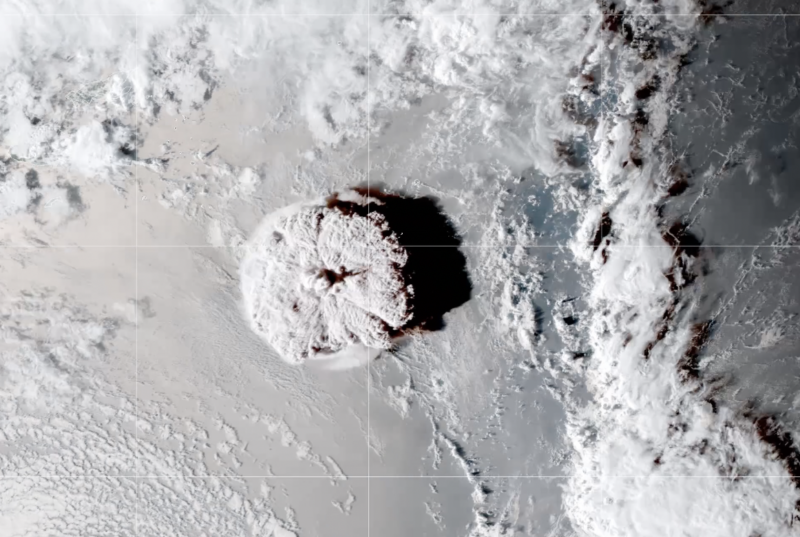Hunga Tonga eruption put over 50B kilograms of water into the stratosphere

Enlarge / The Hunga Tonga eruption started under water, yet still blasted straight through much of the atmosphere. (credit: NASA)
In January this year, an undersea volcano in Tonga produced a massive eruption, the largest so far this century. The mixing of hot volcanic material and cool ocean water created an explosion that sent an atmospheric shockwave across the planet and triggered a tsunami that devastated local communities and reached as far as Japan. The only part of the crater's rim that extended above water was reduced in size and separated into two islands. A plume of material was blasted straight through the stratosphere and into the mesosphere, over 50 km above the Earth's surface.
We've taken a good look at a number of past volcanic eruptions and studied how they influence the climate. But those eruptions (most notably that of Mount Pinatubo) all came from volcanoes on land. Hunga Tonga may be the largest eruption we've ever documented that took place under water, and the eruption plume contained unusual amounts of water vapor-so much of it that it actually got in the way of satellite observations at some wavelengths. Now, researchers have used weather balloon data to reconstruct the plume and follow its progress during two circuits around the globe.
Boom meets balloonYour vocabulary word of the day is radiosonde, which is a small instrument package and transmitter that can be carried into the atmosphere by a weather balloon. There are networks of sites where radiosondes are launched as part of weather forecasting services; the most relevant ones for Hunga Tonga are in Fiji and Eastern Australia. A balloon from Fiji was the first to take instruments into the eruption plume, doing so less than 24 hours after Hunga Tonga exploded.